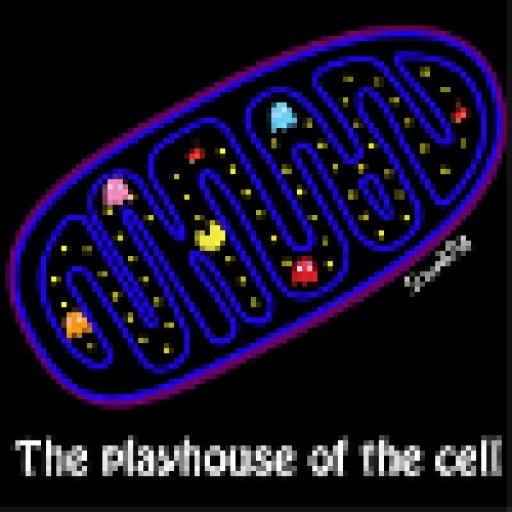Detailed Plan
*** Our philosophy ***
Bitcoin gave us free-circulating money. Ethereum established a framework for decentralized engineering. Cardano upgraded and formalized scalability and robustness. The next evolution, we think, is an NFT-enabled free-circulation, traceability and marketization of intellectual property rights. And by extension, knowledge.
*** Consultants/Advisors ***
Tariq Daouda, PhD
Machine learning specialist
CEO of Bluwr, a calm plateform for sharing ideas freely and easily.
<https://www.bluwr.com/>
<https://www.linkedin.com/in/tariqdaouda>
Roger Palou, PhD
Microbiome engineering specialist
Research associate and science communicator
<https://www.linkedin.com/in/roger-palou-phd-b963622a>
*** Our media links ***
<https://www.instagram.com/sciwalkart/>
<https://sciwalkart.bigcartel.com/>
*** Problem definition ***
Academic publishing primarily happens in closed-access journals (dx.doi.org/10.7717/peerj.4375) and is the only system in which authors lose all rights to their creations. The current system is certainly not ideal, especially when contrasted with other publishing fields such as newspapers, biographies, scripts, plays and novels.
Scientific publishing is a multi-billion dollar industry in which scientists generate the product and receive no benefit. In addition, the top-ranking companies have profits that can go up to 40%, meaning there is a big margin to redirect some of these benefits to the scientists. The problem is that there is no platform currently in place that would allow a connection between the producer (scientist) and the profits generated by the product (scientific content). What is lacking is a bridge for profits to flow directly to the scientist, without the need for a middleman.
With the growing popularity of open access journals (PLOS publisher), the scientific community seems to recognize that the marketization of research has reached a state of oligopoly (few journals with massive influence are able to overprice access to research).
Free-circulating knowledge would allow for different monetization schemes for scientists, something researchers in every domain needs. The more funding for research, the better.
For knowledge to truly become free-circulating, the following 3 criteria need to be met.
- <u>Researchers should keep ownership of their products.</u>
- <u>They should be able to reap the benefits of those products when/if they become popular/impactful.</u>
- <u>The public should have a right to transparent and easy access to the science they helped fund.</u>
*** In depth ***
The current distribution of scientific knowledge to the world is based on a dual system: (1) Through private publishing groups that are in large part closed-access, and (2) with a patent-oriented system which is even more restrictive. We tend to believe that there is a better way.
Scientific results and documents are perceived by scientists as tools used to communicate new discoveries. However, they have an additional value for society. Compared to how a biography is a means for an individual to share their thoughts and experiences to the public, a scientific article is a tool scientists use to communicate with other scientists, almost exclusively, unfortunately due to the very nature of the medium itself. In fact, articles contain opinions, notably in the discussion section of a paper. Thus, scientific knowledge has intrinsic value beyond its logical conclusions, meaning a manuscript can be conceptualized as a literary document (such as a novel, journal, opinion article or poetry) or even a piece of art (such as photography, paintings) crafted to present results in the most honest and unbiased fashion. Like a vintage piece of literature or an art collectible, it could be acquired and traded.
Just as the first X-ray crystallography of DNA by Rosalind Franklin (https://i.stack.imgur.com/8XHZX.jpg) is viewed by many as a highly valued collectible, right now, digital content of this sort cannot enjoy the same properties. NFT technology is the missing link that would make this possible. How cool would it have been if the first paper that coined the name 'CRISPR' (dx.doi.org/10.1046/j.1365-2958.2002.02839.x) was minted as an NFT ?
Manuscripts and other science collectibles can be minted into open science NFTs (osNFTs) and made available to society.
In this model, a scientific document or image would be transformed into an osNFT, creating verifiable rights for these digital assets. A system based on osNFTs would simultaneously retain the original author's copyright and make the asset a tradable product. Pre-set royalties would ensure perpetual revenue streams to the author/lab, where legal entities allow.
Transforming scientific results into osNFTs would effectively create a bridge between science and society. An asset can be acquired from the scientist and traded, establishing a market that would help identify which scientific questions are most relevant to society. In other words, supply and demand would generate a new metric by which we measure how society perceives a given scientific challenge. Creation of scientific content in this context would now be subject to quasi free-market conditions, unshackled from the selfish expectations of centralized entities. It would be a place where the public can have a say in the direction of science, effectively leading to a better democratization of it.
What is needed is a marketplace to make all of this possible.
We believe that value can be generated with "Pay-per-own" and "Pay-per-view" monetization strategies:
- "Pay-per-own": as a collectible, there is inherent value in a document that first reports a new method or discovery (historical, legal or religious documents have economic value as collectible items). An original scientific digital asset can be owned by someone who either (1) sees value in this item and expects its value to grow or (2) wants to donate to the field, and thus receive a 'stamp' which would effectively serve as a proof-of-donation. In the latter scenario, a re-sell of the osNFT would not generate income for the buyer (person who donated the money), the money would go instead to a treasury that would be used to fund additional research.
- "Pay-per-view": the current publication system requires authors to pay to publish and readers to pay exorbitant fees to access the document (tens of dollars for just one paper, or via subscription through universities, who pay fees so high, that the journal often times prohibits the university from publicly declaring the amount paid in subscriptions, money that very likely also comes from tax money and donations). In the case of open-access publications, readers can access the document for free, but the authors need to pay thousands of dollars to publish (https://plos.org/publish/fees/). In both cases, someone is at a huge financial disadvantage. With the "pay-per-view" strategy, for a very small price, anyone can get virtual access to the document, with the funds going to the author. The fee would be counted in cents, so that the user is not impacted when, say, they access hundreds of papers, but for the author, the sum of those small fees would add up to a substantial amount. A high-impact paper, with say 100k views a year, would yield 1000$/year if the price for viewing it is only 1 cent. Sadly, with the current web2 publishing standards, this model is not enforceable. However, with decentralized web3 open access journals that will inevitably come into existence, "par-per-view" has the potential to revolutionize the way science is funded, leading to true decentralization of research. We would love to address this point following the hopeful success of this proposal.
With all that, we strongly believe that the Cardano ecosystem, coupled with the osNFT model, would be the ideal platform to monetize digital content that is currently not being exploited by the scientific community, i.e., open access papers with copyright retention for the authors.
*** Concrete plan ***
As fun and revolutionary as our ideas might be, we are strongly of the view that being effective with a focused plan is better than having a great idea that is unable to gain traction. We do not wish to wait for a decentralized peer-review publishing platform to exist before we can apply our monetization strategy (Pay-per-own and Par-per-view). Instead, we will pour all our efforts in making the osNFT appeal to the public. This will give us our proof-of-concept that we will be able to build upon. After all, bitcoin itself was developed as a proof-of-concept before worldwide consensus decided to make it a global currency :).
Increasing public interest in science is our first and foremost priority, we are aware that NFTs are a concept that can be very abstract to people outside the crypto space. People can generally understand NFTs when applied to pictures, music, and other traditional art. Applying it to a high-level concept, such as knowledge, in the sense that we refer to here, would need a break-in period for most people to get a good grasp on its utility. For these reasons, will be focusing on 4 things:
- Establishing a clear standard with visual examples of what an osNFT is.
- Converting scientific content into art pieces while applying scientific rigour.
- Introducing open-access papers into the system, asking authors to create or assist in the creation of visual representation of their paper's conclusions.
- Build a marketplace for osNFTs that is visually appealing to most people.
*** Challenge metrics ***
Strategically, as science is heavily based on funding and more and more scientific research is purely 'dry' (informatics and data analysis), this project would most definitely expose a substantial number of highly skilled individuals to the Catalyst project and to the whole Cardano ecosystem, resulting in a net inflow of brain power to Cardano.
*** Execution steps ***
Phase 1 (1 month)
- Formally define the osNFT standard and its underlying legal component (Open-Source, CC-BY, etc.).
- Amass high-quality data and constructive feedback from high-profile PIs (Principal Investigators), from contacts at our workplace (academic high-tech research center).
- Generate primitive osNFTs from PhD student's work (beautiful microscopy photos, sexy graphs, etc.) as a proof of concept. Sciwalkart, one of the submitters of this proposal, would be more than happy to mint their artistic work as osNFTs.
Phase 2 (4 months)
- Contact PIs from a curation of arxiv.org or PLOS papers for their potential enrolment in this project.
- Refine and finalize the osNFTs standard.
- Build a UI for the listing of the osNFTs on a decentralized hosting platform (Arweave permaweb).
- Start working on tutorials.
Phase 3 (8 months)
- Build an automated verification system that only allows copyright holders to submit their manuscripts (e.g., through the 'doi' standard).
- Start the minting process of manuscripts into osNFTs from interested scientists.
- Publicize the platform to generate public interest.
Phase 4 (12 months)
- System is gaining traction; potential scalability issues are being addressed.
- Marketplace is catching the public's eye; tutorials need to be updated.
- Adapt the whole experience based on user feedback.
*** Defining success ***
-
Both the scientific community and the public sees value in osNFTs and start minting (scientists) and trading (public).
-
Revenue generated from the marketplace would allow the creation of a treasury for future scientific research funding.
*** Budget (in USD) ***
Data curation and refinement – 25$/hour * 4h/week * 2months = 800 $
Legal aspect including research and consultations – 50$/hour * 2h/week * 1month = 400 $
Smart contract engineering – 50$/hour * 10h/week * 6 months = 12000 $
PIs and PhD students enrolment – 30$/hour * 5h/week * 2month = 1200 $
UX design – 30$/hour * 5h/week * 4months = 2400 $
Marketing and outreach – 30$/hour * 5h/week * 3months = 1800 $
Total = 18,600 $





